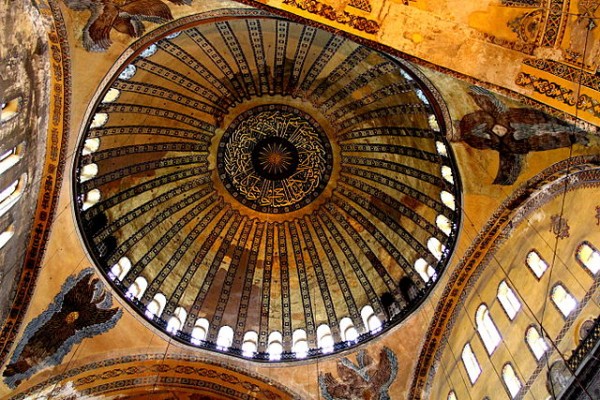
Two empires, two faiths, side by side? Photo Credit: Rabe!
In an article entitled “In Defense of Empire” published on March 19, chief geopolitical analyst at Stratfor and national correspondent for the Atlantic Robert Kaplan argues we ought to bring back a form of American “imperialism.” Imperialism, he argues, is both misunderstood and an effective governing tool. While I don’t intend to focus on the full article here, I will focus on the protection of minority rights under the Ottomans. After all, as Kaplan notes: “The early modern empires of Hapsburg Austria and Ottoman Turkey were well known for their relative tolerance and protection of minorities, including the Jews.”
The Ottomans relegated some powers of self-governance to “the people of the book”: Christians and Jews. The Ottoman’s millet (“nation”) system compartmentalized the empire into a series of minority groups with limited legislative powers on a confessional basis. Because the leader of a millet answered directly to the sultan, it effectively solidified the sultan’s place as the ultimate hierarch. Most importantly, the millet system divided the empire on the basis of religion, not ethnic identity. The Orthodox millet was dubbed the Rum (Roman) millet–an indicator of their faith, as well as a hat tip to what the Byzantines self-identified as: Romans.
This “nonliberal model of pluralism” may have allowed for limited freedoms for minority groups; however, it did not mean that members of the Christian or Jewish millet were: a.) equal to their Muslim counterparts; b.) given these rights for any other reason than sheer practicality; c.) protected minorities.
Inequality was the bedrock of the Ottomans’ treatment of religious minorities. It expressed itself in a number of different ways, particularly for the Christianity community. Despite the fact that millets were supposed to govern themselves in religious matters, the sultan could and did restructure ecclesial bodies. He overstepped the boundaries on state interference in ecclesial matters by granting the Orthodox Church’s Holy Synod, the body of metropolitans from the surrounding area that elected the patriarch, more power than it traditionally was alloted. Under the Ottomans, the Synod was essentially given “veto” power over patriarchal decrees—i.e., no decree could go into effect without the Synod’s consent. In addition to restructuring traditional ecclesial bodies, the Ottomans gave themselves the power to deny permits for church repairs and construction, implemented a distinctive dress code to identify Christian and Jews from Muslims, and effectively denied Muslims the right to convert to another religion by making apostasy punishable by death.
Limited self-rule was permitted for practical, not ideological, purposes. By providing limited freedoms, the sultan could provide enough breathing room to limit frustrations and stave off uprisings. Additionally, allowing for some form of self-governance made it much easier to hold a community accountable if it did something the sultan did not approve of. Each millet, headed by a single leader who answered directly to the sultan, provided a chain of command that made it easier to quash dissent and hold communities accountable by targeting their heart and soul. For the Christian community, this precisely what why the Ottomans targeted the office of the Ecumenical Patriarch when the Ottomans reacted to the Greek uprising by hanging Patriarch Gregorios V on April 10, 1821.
Finally, and most importantly, the millet system was not designed to provide protection for minorities. To quote one author: “millets are not minorities, and the very unique and dynamic millet system is not a regime of protecting minorities.” Simply because a millet was granted the opportunity to collect some taxes or educate its flock did not make its people a protected minority under the law. “Protection” in the form of ensuring religious freedom, in fact, only formally comes to the empire in 1856, when the Ottoman Reform Edict is passed. Even after 1856, minorities were still not protected from state interference or oppression—indeed, the Ottomans began a targeted extermination of Armenian, as well as Greek and Assyrian, minority groups in 1915. At least 1.5 million died.
The Ottomans may not have been the “Belgians in the 19th-century Congo and the Russians throughout modern history in Eurasia,” but the imperial structure was far from ideal for minorities. Perhaps instead of glossing over anachronistic views of minority protections, is high-time we ask: Why exactly do we find the idea of empire so appealing?